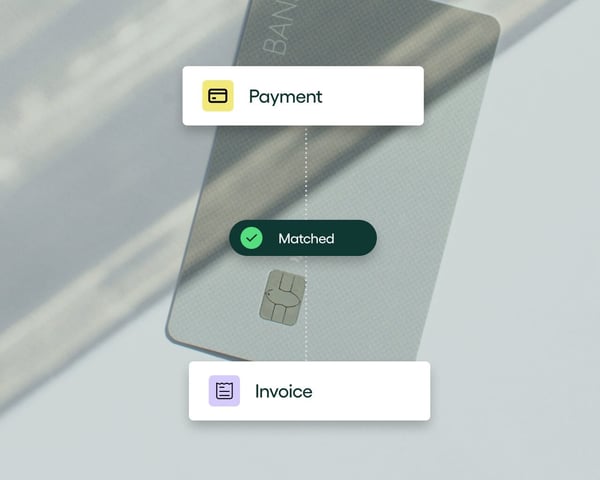

If you’re managing payments for a mid-market business, you will feel the pain of how manual processes can cause delays and drain resources.
Payment automation can help you streamline these processes, saving you time and improving financial accuracy. But understanding the different types of payment automation is key to optimizing your financial operations.
In this article, we’ll dive into the different types of payment automation, how they work, and when you should use each one. Plus, we’ll give you real-world examples of how businesses like yours are using automation to scale up their payment processes.
1. ACH (Automated Clearing House) Payments
ACH payments are electronic transfers between bank accounts through the Automated Clearing House network. More than 60% of B2B companies use ACH for payroll, vendor payments, and other business-to-business (B2B) transactions because they are fast, secure, and cost-effective.

ACH transfers generally take 1-2 business days to clear. They’re faster than traditional checks and more cost-effective than wire transfers. This makes ACH ideal for recurring payments, such as monthly vendor invoices or payroll.
You should use ACH payments when you need a reliable, cost-effective way to handle routine transfers. If you’re managing regular payments to suppliers or payroll, ACH will streamline the process without the high costs of other methods.
If you’re a healthcare provider, ACH can automate payroll for your entire team, cutting down on manual work and reducing errors. ACH payments ensure timely payments across departments, saving you both time and money.
2a. Virtual Cards
A virtual card is a single-use credit card number generated for a specific transaction. It’s ideal for secure online payments because you can control the spending limit and expiration date.
Virtual cards are the fastest-growing B2B payment channel and transactions are expected to grow from $3 trillion in 2024 to $11 trillion in 2028.

Your payment automation solution generates a virtual card number for each transaction.
You can set limits on how much can be spent and how long the card is valid. This gives you complete control over how and when payments are made.
Virtual cards are best used for making secure, controlled payments to suppliers or vendors. If you’re worried about fraud or want to keep tighter control over your outgoing payments, virtual cards are a smart solution.
Let’s say you’re an AP manager at a hospitality business and you need to pay for supplies. Instead of using a physical card, you generate a virtual card with a specific limit for that supplier. This speeds up the payment process, ensures you don’t overspend, and reduces the risk of fraud.
2B. Virtual Card Rebate
Beyond secure payments, virtual cards also offer an additional financial benefit: rebates.
For every payment you make with a virtual card, your business can earn a percentage back in the form of cash rebates. These rebates can be a significant advantage, turning your payments into a revenue-generating activity.
With payment automation, every virtual card transaction can be linked to a rebate program without any additional manual effort from your AP team. This means you not only make payments more secure but also contribute directly to the company’s bottom line.
By using rebates, your AP department can actually generate enough savings to offset other payment-related costs, positioning itself as a revenue-generating center rather than just a cost center.
3. Wire Transfers
Fun fact: 13% of all wire transfers are for B2B payments.

Wire transfers are real-time electronic transfers that send money directly between banks. They are one of the fastest ways to move funds but tend to be more expensive than ACH.
Wire transfers are processed immediately, making them ideal for urgent or high-value payments. Once initiated, the funds are typically available within the same day.
Use wire transfers if you need to make large, time-sensitive payments or send money internationally. They’re fast and secure, making them the best choice for high-value transactions where timing is critical.
If you’re in manufacturing and need to pay international suppliers for materials, wire transfers allow you to send funds in multiple currencies on the same day. This ensures timely deliveries and avoids any production delays.
Read more 👉 5 Benefits of Payment Automation for AP Teams
4. B2B (Business-to-Business) Payments
B2B payments refer to transactions between two businesses, like paying vendors or contractors. You can automate these payments through ACH, wire transfers, virtual cards, or other methods.
With payment automation, you can automate everything from invoice receipt to payment execution, making sure your B2B transactions are processed efficiently and accurately.
If your business handles a high volume of vendor payments, B2B payment automation helps you streamline these processes. It ensures that payments are on time, errors are minimized, and vendor relationships are strengthened.
If you manage a manufacturing company, you likely pay multiple suppliers regularly. By automating B2B payments, you can schedule payments, reduce manual entry, and capture early payment discounts, all while ensuring that vendors are paid on time.
5. Payment Reconciliation
Payment reconciliation is the process of matching payments to the corresponding invoices, purchase orders, and receipts. In manual processes, this is time-consuming and prone to errors.
Automation takes care of this for you.
After payments are made, your system automatically checks that payments match the correct invoices and orders. If there are discrepancies, they are flagged for review, allowing you to resolve issues quickly.
If your business processes a high volume of transactions, automated payment reconciliation ensures accuracy and saves your team hours of manual work.
If you work in healthcare, you might process payments to hundreds of medical suppliers. Payment automation can reconcile these payments automatically, ensuring that everything matches up. This reduces the workload for your AP team and improves the accuracy of your financial records.
6. Payment Exception Handling
Payment exception handling refers to how your AP team deals with payments that deviate from the normal process. Exceptions may occur due to missing information, discrepancies between invoices and purchase orders, incorrect account details, or failed transactions.
These exceptions can create significant delays if handled manually, requiring time-consuming back-and-forth communication to resolve the issues.
Payment automation software can identify exceptions immediately, flagging discrepancies for review. The system can provide insights about the exact issue, allowing your team to address it quickly without having to manually inspect each payment.
This reduces delays, improves accuracy, and maintains stronger vendor relationships because payments are addressed promptly without unexpected holdups.
Picture the scene: there’s a discrepancy between the invoiced amount and the purchase order amount for a vendor payment.
Instead of your team needing to manually check the details and send multiple emails to resolve the issue, your payment automation solution detects the discrepancy automatically, categorizes it as an exception, and alerts the responsible approver.
The system can also route the flagged invoice to the correct person who needs to provide approval, reducing the time it takes to handle exceptions and getting the payment back on track faster.
7. Payment Remittance
Payment remittance is the process of notifying suppliers and vendors that payment has been made. Remittance advice helps suppliers keep track of payments received, making reconciliation on their end more manageable.
Like most things in accounts payable departments, managing remittance manually can be cumbersome, particularly for mid-market companies dealing with multiple vendors and payment methods.
With payment automation, the entire remittance process is streamlined.
As soon as a payment is executed, automated systems can generate and send remittance advice directly to vendors. Remittance advice can include details such as the invoice number, payment amount, and date of payment, helping vendors understand precisely what each payment covers.
This level of transparency helps prevent misunderstandings, reduces inquiries from vendors, and fosters trust in your business relationships.
Instead of manually sending out emails with remittance details after each payment, your payment automation software automatically sends out remittance advice to all suppliers.
This ensures that suppliers are promptly informed of payments, reducing their need to reach out for clarification and freeing your team from answering repetitive inquiries.
Conclusion
There’s no doubt about it:
Payment automation will change how your business operates.
Whether you’re using ACH for recurring payments, virtual cards for secure transactions, wire transfers for urgent payments, or automated reconciliation to keep your books accurate, each type of payment automation serves a purpose in improving efficiency and control.
By automating your payments, you’ll free up your team to focus on higher-value tasks, reduce errors, and ensure smooth operations as your business grows.
Rillion: The Complete Solution for Payment Automation
Are you looking to integrate payment automation with your AP processes?
Rillion Pay offers Payments as a Service (PaaS)—a fully managed solution for all your payment needs. With Rillion Pay, you can eliminate manual tasks like printing, signing, and mailing checks, and focus solely on approving the payments while Rillion handles the rest.
Key Benefits of Rillion Pay:
- Turnkey Implementation: Get started quickly without needing complex IT involvement. Rillion Pay’s onboarding process is fast and hassle-free, allowing you to start managing payments within weeks.
- Supplier Enablement: Rillion Pay also manages supplier onboarding, converting them to electronic payments, which reduces your team’s workload and improves supplier relationships.
- Fully Managed Payments: Rillion Pay is a truly managed service—meaning your AP team no longer needs to handle every step of the payment process. From initiation to reconciliation, Rillion takes ownership of the payment journey.
Schedule a consultation today and one of our dedicated payment automation experts will guide you through the platform and discuss solutions tailored to your needs.

